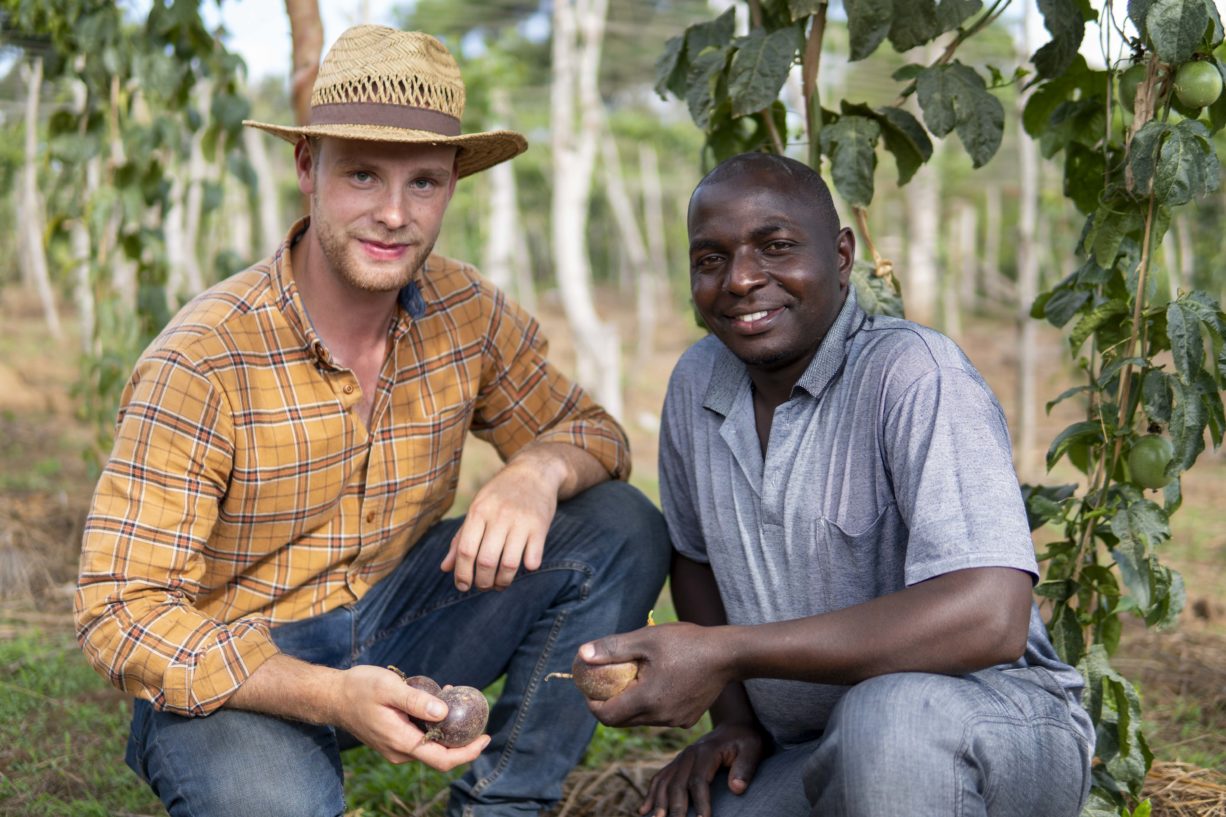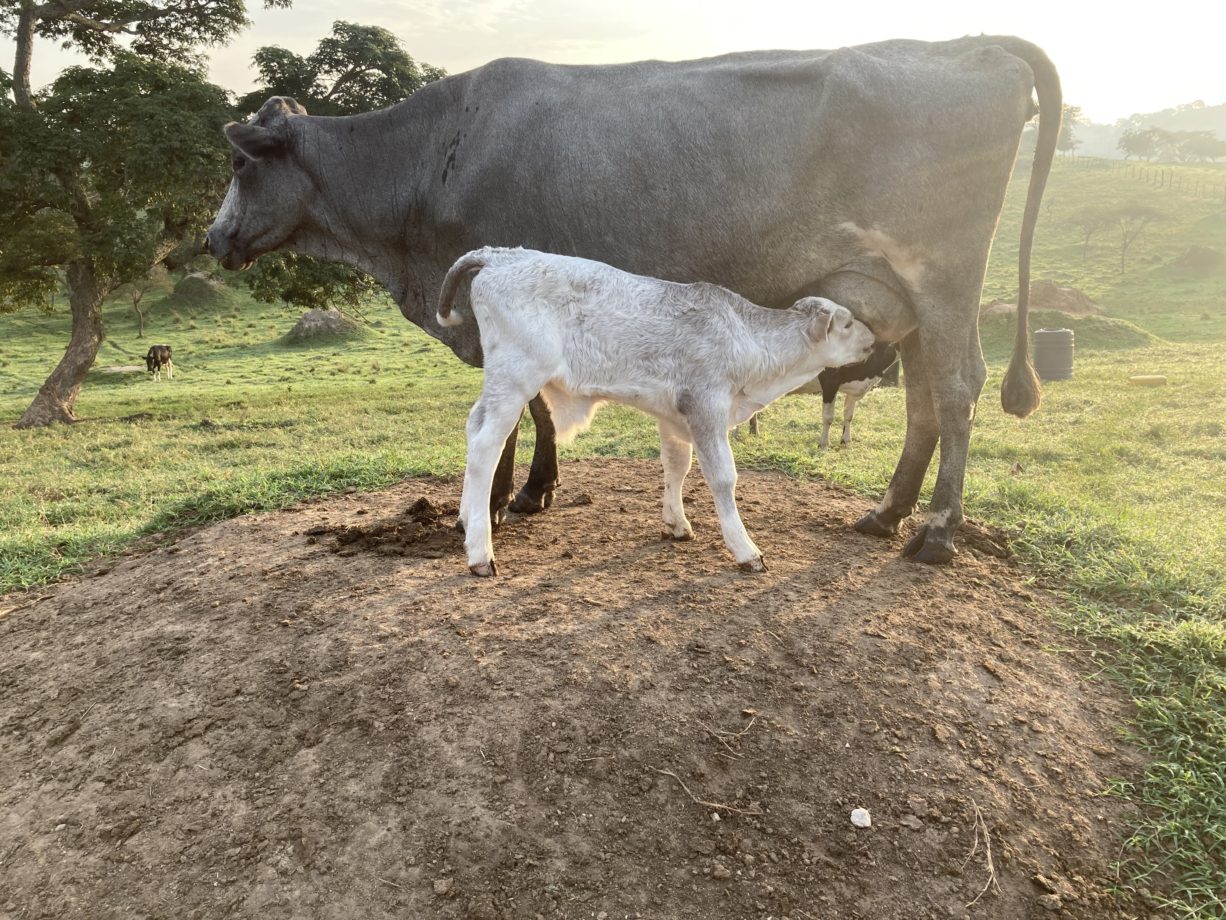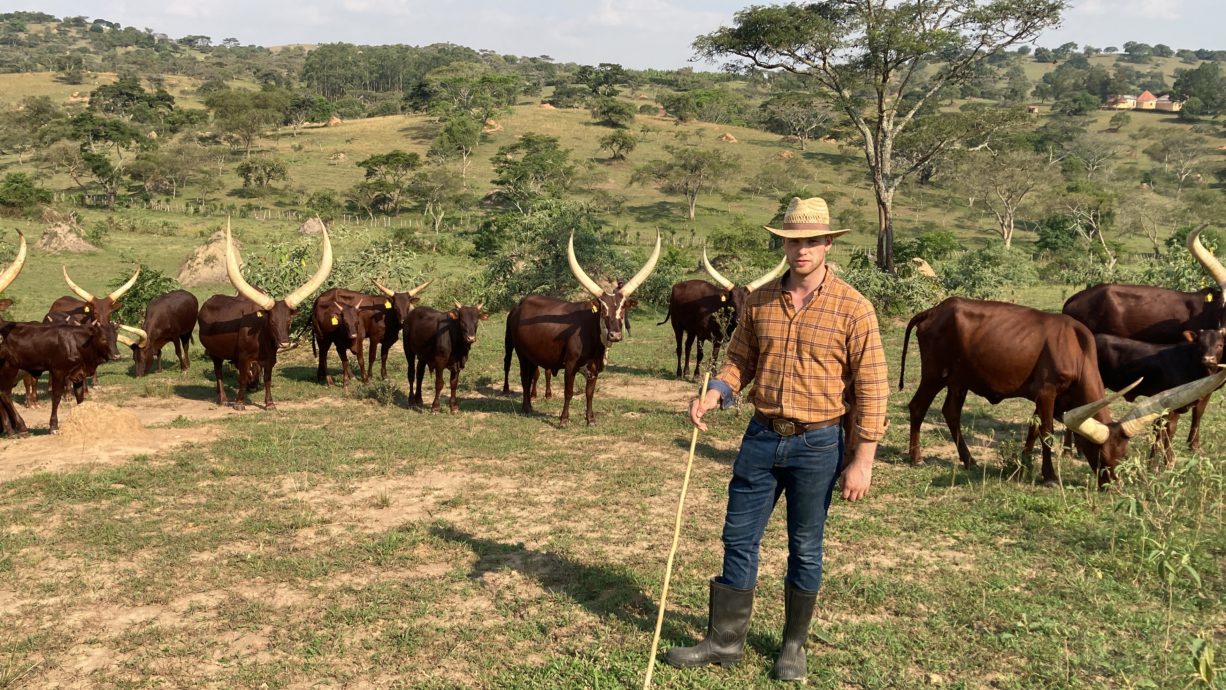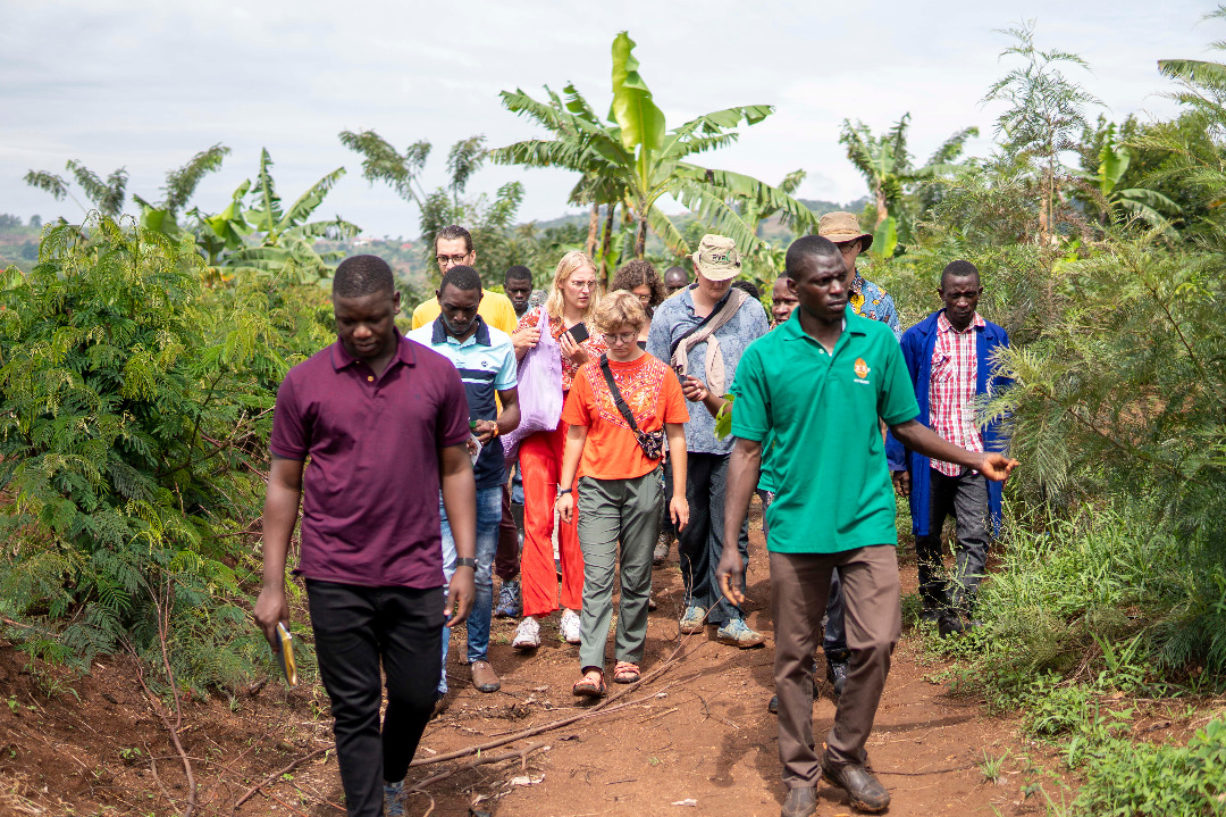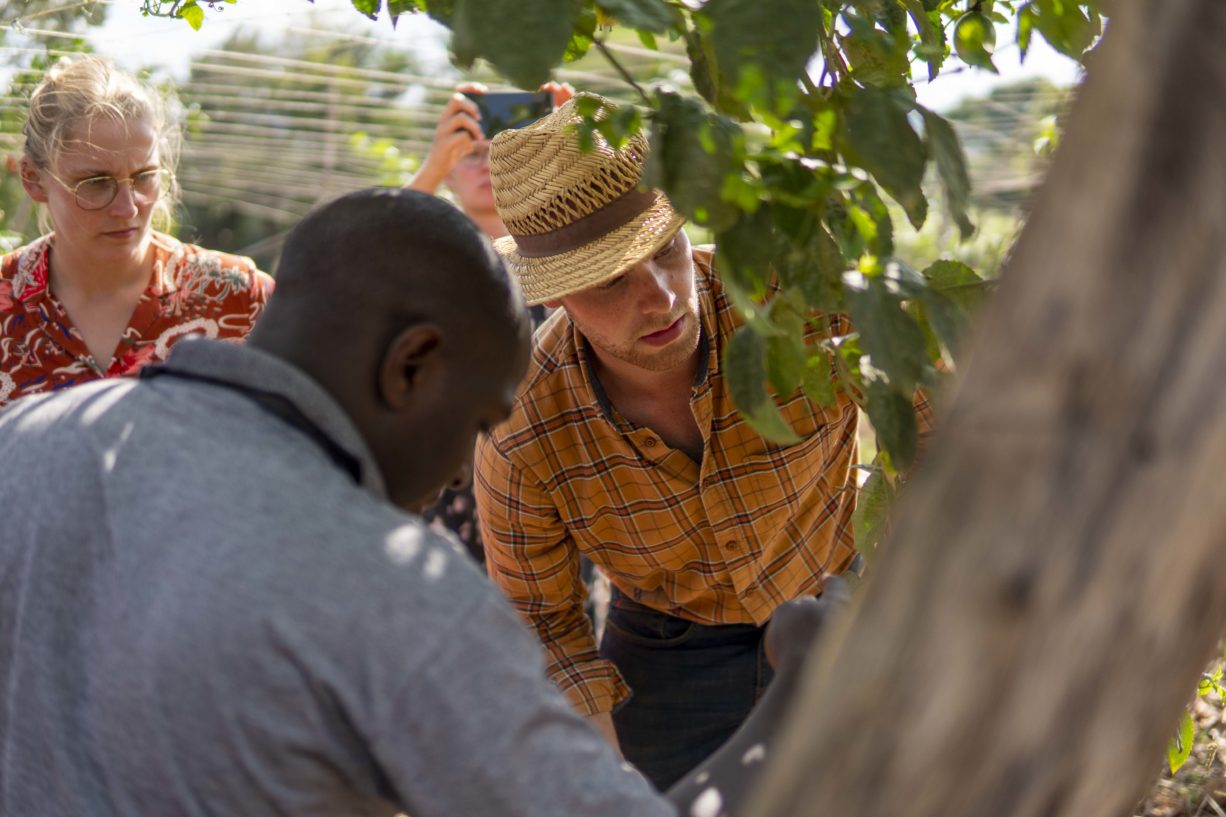In Ankole, cattle farming has special significance. The landscape is characterised by grazing cows. The culture is strongly influenced by livestock farming. People feel very attached to their animals and maintain many traditions. These include, for example, milk processing and storage in traditional containers and driving and herding cattle with a special stick. Milk production is an important source of income in the region. On most farms, milking takes place by hand. These businesses are therefore self-sufficient in energy. At the same time as milking, the calves are also taken care of. They are left to their mothers’ udders after milking and drink the remaining milk. After that, mother and calf are again separated into different areas. Milk is collected mainly in milk churns with a capacity of 50 litres and picked up by milk trucks. The milk is transported either by truck or by motorcycle. Drivers sell the milk to dairies and processors.
The original breed of the region is Ankola cattle. This breed is distinguished from other breeds primarily by its exceptionally strong horn growth. The colour of the animals in most cases is chestnut brown. The extremely large horns should preferably be white. Identification with local cattle is strongly felt in the region. The milk yield is very low, yet they are kept by many families.
In the 1980s, purchasing and cross-breeding the “Holstein Frisian” dairy breed began in order to improve the milk yield of the cows. As a result, today you can find many dairy cows that have a strong milk trait. Most animals have been bred through many generations of displacement cross-breeding. However, many crosses of the first generations can still be found today, with them possessing characteristics of both breeds – Holstein Frisian and Ankole. The clearly larger horns, the skeleton and the colour pattern of the skin make it quickly apparent that features of both breeds are firmly established. This is also often reflected in the milk yield. First generation crosses often have a lower milk yield than a Holstein Frisian cow. However, these cows are much more resistant to environmental influences.
